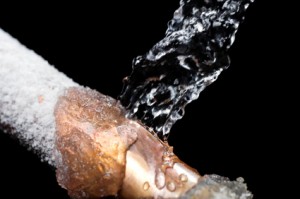Winter is just around the corner, and now is the time to prepare your plumbing to avoid costly repairs when temperatures drop. Winterizing your plumbing system ensures that your pipes and fixtures are protected from freezing and bursting, which can lead to water damage and significant repair expenses. Here’s how to winterize your plumbing and keep your home safe through the cold season.
1. Insulate Exposed Pipes
One of the most effective ways to prevent pipes from freezing is to insulate them. Focus on exposed pipes in areas like the basement, garage, and attic, where temperatures are often lower. Foam pipe insulation sleeves or heat tape are excellent options for this task. They provide a protective layer that keeps pipes warmer, reducing the risk of freezing. In particularly cold areas, consider wrapping pipes with both foam insulation and heat tape for extra protection.
2. Drain Outdoor Faucets and Hoses
Outdoor faucets and hoses are particularly vulnerable to freezing, as they are directly exposed to cold temperatures. Disconnect any hoses and store them indoors for the winter. After removing the hoses, drain the outdoor faucets by turning off the water supply to each faucet and allowing any remaining water to flow out. For added protection, install an insulated faucet cover on each outdoor tap to guard against freezing temperatures.
3. Protect Your Indoor Faucets
In extreme cold, even indoor faucets can be at risk, particularly if they are on exterior walls. To keep pipes warm, consider opening cabinet doors below sinks in kitchens and bathrooms. This allows warm air to circulate around the pipes, reducing the chance of freezing. Additionally, let faucets drip slightly during extremely cold weather. A slow trickle of water can help prevent pipes from freezing by keeping water moving through the system.
4. Seal Gaps Around Pipes
Cold air can seep into your home through small gaps and cracks around pipes, particularly those entering through exterior walls. Use caulk or foam insulation to seal any gaps you find. This not only protects pipes from freezing but also improves energy efficiency by reducing drafts and heat loss.
5. Check Your Water Heater
Your water heater works harder in winter, as it has to raise the temperature of colder incoming water. Before winter sets in, flush the water heater to remove any sediment buildup, which can reduce its efficiency. Insulating the water heater tank is also a smart step to improve energy efficiency and reduce heating costs. If your water heater is nearing the end of its lifespan, consider replacing it to avoid sudden breakdowns during the colder months.
6. Locate Your Main Water Shutoff Valve
In the event that a pipe does freeze and burst, you’ll want to know exactly where your main water shutoff valve is located. Turning off the water quickly can help minimize damage until a plumber arrives. Make sure everyone in your household knows where this valve is and how to operate it.
7. Consider a Professional Inspection
If you’re not confident about winterizing your plumbing system yourself, consider scheduling a professional inspection. A plumber can identify vulnerable areas and suggest additional preventive measures to protect your home. This is especially important if you have an older home, as older pipes may be more susceptible to damage.
By following these steps, you can help prevent frozen pipes and other common winter plumbing issues, saving yourself time, money, and stress. Preparing your plumbing in Branchburg, NJ, for winter is an investment in your home’s safety and efficiency, ensuring you’re ready for whatever cold weather comes your way.
Call Schaible’s Plumbing & Heating Inc. when you need AC repairs.

